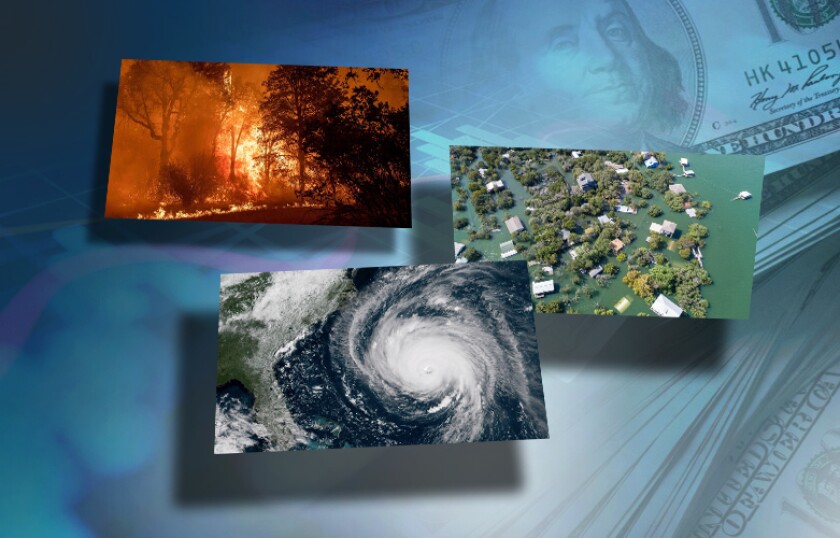Pricing of cat bonds eased a little, settling at the low edge of guidance compared to Q4, when prices finalised at 35 basis points (bps) above the top end of guidance on average.
Fermat's John Seo called the top of the market at Sifma in March, which has proved accurate according to Trading Risk’s preliminary Q1 data.
Floridian carriers particularly came out early, as they sought to secure limit in what was expected to be a capacity-constrained market.
Progressive’s Bonanza Re secured $135mn of coverage in January, having come out to market in December. The total limit included $70mn of Class A coverage at a multiple of 8.5x, up from a multiple of 2.8x on a similar deal in 2022.
American Integrity was also out of the gates early with Integrity Re, securing $150mn of Florida wind limit in March, with the multiple also notably rising to 7.2x versus a 4.4x multiple on the Integrity Re issuance of May 2022.
The Alamo Re issuance from the Texas Windstorm Insurance Association introduced a new exchange reinvestment feature as a way to support continued participation by managers with limited fresh capacity.
Meanwhile, sources said that Zenkyoren was poised to bring out a new Japan quake bond ahead of its $700mn Nakama 2018 maturing on 1 April. However, this has not yet been officially offered.
Discussion at Bermuda’s Risk Summit in March highlighted how the Japan renewal would require a rethink of low rate-on-line layers and a new higher minimum benchmark for cat risk, facilitating cat bond participation in non-US zones.
Pricing pressure eases
Cat bond final prices settled at 1,016 bps on a weighted average basis across the market in Q1, up by around 3% from 982bps in Q4.
Multiples, at 4.5x on average, remained on the high side compared to Q1, Q2 and Q3 2022, but this pricing indicator also declined compared to a high of 4.8x in Q4.
The cat bond market experienced two major repricing phases last year: the Ukraine war market shock in Q1 and Hurricane Ian in late September. Now multiples sit somewhere between the two events, still ahead of the post-Ukraine uplift and the average 3.6x multiple achieved in Q2 2022, but eased back from the post-Ian highs.
Sources told Trading Risk that capacity was being raised for cat bonds off the back of higher spreads in the market, with one claim that this was in some cases being deployed "aggressively" borne out by the easing of new issuance prices.
UCITS funds were generally noted as among those raising capital across multiple firms, reflecting the ongoing trend of ILS investors seeking liquid holdings.
This contrasts with the downturn in UCITS funds in the second half of 2022.
Amongst the net winners of the drive to bonds, Fermat’s Seo has said he is targeting $2bn of growth in 2023 and had already secured $1bn in commitments. Fermat's GAM Star Fund stood at $2.61bn as of 28 February, having added $110mn from its position at $2.5bn as of 31 December 2022.
Risk profile moves higher
Still, the gap between spreads and expected losses continued to widen, reaching 942 basis points in Q1. Even though multiples had declined, a trend towards slightly higher-risk bonds meant that the absolute margin on offer was up.
The expected loss profile of the market had moved up a little bit in Q1 2023, over Q1 2022. In Q1 this year, 71% of issuance by volume had a one-year expected loss of 2% or higher, compared to 62% by volume in Q1 2022.
This was influenced partly by the Floodsmart Re 2023-1 issuance, which included some of the riskier notes coming to market in Q1. It comprised $225mn of Class A notes with an expected loss on the sensitivity case of 5.81%, and $50mn of Class B notes with a sensitivity case expected loss at 7.45%.
Matching capital with demand
The challenges of accepting and deploying new capital inflows in sync with new issuance is foremost in the minds of portfolio managers.
With excess capital in the market but new issuance forecast to pick up pace, participants do not want to see a repeat of last year, when capacity abruptly tightened after a slow phase.
“Last year, we were always fearing there would not be enough issuance, then there was not enough capacity,” said one investor.
Overall volume of new issuance is on track to end the quarter in the range $2.8bn-$3bn, broadly in the same ballpark as in the first quarters of 2022 and 2021, with this having fallen from a high of $4bn in Q1 2020.
Looking ahead to Q2, sources anticipate that around one to two new bonds will launch every week throughout April, May and June. This suggests harder reinsurance market rates are expected to hold steady, and sponsors are looking for alternatives to help meet rising demand.
Volume of Q2 new issuance has notably outpaced that of other quarters over the past two years, amounting to $4.8bn in Q2 2022 and $5.8bn in Q2 2021, or 53% and 46% of the annual totals in those years, respectively.
If brokers' predictions of 2023 new issuance are accurate in quoting a range of $11bn-$11.5bn, then using a rough estimation that 50% will come in Q2 would put issuance at $5.6bn over the coming three months.
This quarter’s cat bond review can’t end without an honourable mention of Beazley, which in January placed the world’s first cyber catastrophe bond, raising $45mn of limit with its Cairney Re deal, with Gallagher Securities acting as broker.
The second tranche of the notes is now targeting another $50mn.


